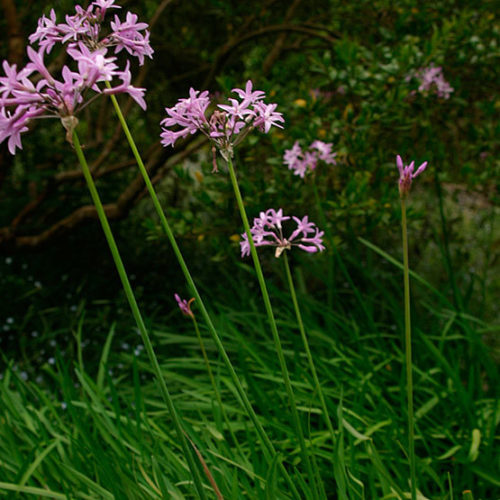Agapanthus Expanding Problems: Soil, Sunshine, and Watering
Agapanthus Expanding Problems: Soil, Sunshine, and Watering
Blog Article
Grasping the Art of Agapanthus Treatment: Vital Steps for Healthy And Balanced Development and Lively Blossoms
In the world of gardening, the cultivation of agapanthus stands as a rewarding undertaking for those that look for to support these sophisticated flowering plants. With their striking blooms and graceful vegetation, agapanthus has caught the attention of garden enthusiasts worldwide. Nonetheless, achieving ideal development and lively blooms requires a nuanced strategy that encompasses various essential steps. From choosing the best selection to understanding trimming strategies, the journey towards cultivating thriving agapanthus plants is diverse and holds the key to opening the full possibility of these organic treasures.

Choosing the Right Agapanthus Selection

When selecting the right Agapanthus range for your yard, take into consideration elements such as climate suitability, blossom shade, and growth practice. Additionally, take into consideration the climate in your area to guarantee the Agapanthus range you select can prosper in your certain problems. Recognizing the development habit of different Agapanthus selections is essential for correct positioning within your yard.
Perfect Growing Problems
Thinking about the optimal ecological requirements is important for effective Agapanthus growing. Agapanthus prospers in well-draining soil with a slightly acidic to neutral pH level. When growing, pick a place that obtains full sunlight to partial color. In hotter climates, giving some afternoon color can prevent scorching of the fallen leaves. Agapanthus plants are sensitive to chilly temperatures and should be shielded from frost throughout winter season months.
To make certain healthy development and vibrant blooms, plant Agapanthus bulbs at a deepness of about 2-4 inches and room them 8-12 inches apart. Mulching around the base of the plants assists keep wetness and reduces weed development.
Watering and Fertilizing Tips
Maintaining proper wetness degrees and giving essential nutrients are vital components in the treatment program for Agapanthus plants. When it concerns watering Agapanthus, it is important to strike an equilibrium. These plants choose constantly wet soil however are prone to root rot if overwatered. During the growing period, water deeply when a week, making certain the dirt is well-draining to prevent waterlogging. In hotter climates or throughout durations of drought, more constant watering might be needed to keep the dirt uniformly moist. Nevertheless, reduce watering in the wintertime to stop water logged problems.
Fertilizing Agapanthus is essential for promoting healthy and balanced useful reference development and respected blooms. Apply a balanced plant food, such as a 10-10-10 formula, in the very early spring as new growth arises. By adhering to these watering and fertilizing pointers, you can ensure your Agapanthus plants grow and create vibrant, long-lasting blossoms.
Trimming Methods for Agapanthus
Trimming Agapanthus plants at the ideal times and with appropriate strategies is crucial for maintaining their health and promoting ideal development and blooming. The perfect time to trim Agapanthus is in late wintertime or very early spring prior to new growth emerges. Start by getting rid of any type of yellowing or dead leaves near the description base of the plant. Cut them as close to the ground as possible without harming the arising shoots.
Deadheading invested flowers can additionally redirect the plant's energy right into generating more flowers instead than setting seeds. If you desire to collect seeds for proliferation, leave some blossoms to mature and dry on the plant.
Remember to use tidy, sharp tools to make precise cuts and minimize the threat of introducing illness. Agapanthus. Routine pruning will certainly assist maintain your Agapanthus looking neat and healthy while making certain a bountiful display screen of beautiful flowers
Handling Typical Pests and Conditions
After ensuring correct pruning methods for Agapanthus, it is necessary to deal with common bugs and illness that can influence the wellness and vitality of these plants. Agapanthus plants are typically durable however can still come down with certain problems. One usual parasite that impacts Agapanthus is the Agapanthus gall midget. This tiny, orange fly lays its eggs in the vegetation, leading to distorted growth and blossom buds that fail to open up. To combat this pest, prune and destroy any afflicted plant parts and consider making use of insecticidal soap.
An additional usual problem is fungal leaf area, which provides as dark lesions on the leaves. To stop fungal diseases, make sure excellent air flow around the plants, stay clear of above watering, and get rid of any kind of contaminated leaves immediately. Furthermore, Agapanthus plants can struggle with root rot if they are planted in improperly draining pipes dirt. To avoid this, plant Agapanthus in well-draining dirt and prevent overwatering. By being alert and taking punctual action versus conditions and insects, you can assist your Agapanthus plants flourish and create dynamic blooms.

Conclusion
Finally, mastering the art of agapanthus treatment involves picking the best variety, giving perfect planting problems, appropriate watering and fertilizing, proper pruning strategies, and attending to usual bugs and diseases. By adhering to these necessary actions, you can ensure healthy growth and vibrant blossoms for your agapanthus plants. Remember to on a regular basis keep track of and preserve why not find out more your plants to promote their overall well-being and longevity.
To make certain healthy and balanced growth and lively blooms, plant Agapanthus bulbs at a deepness of regarding 2-4 inches and area them 8-12 inches apart. By complying with these watering and fertilizing pointers, you can ensure your Agapanthus plants prosper and produce vibrant, resilient blossoms.
One usual pest that affects Agapanthus is the Agapanthus gall midget. Additionally, Agapanthus plants can experience from origin rot if they are grown in inadequately draining soil. By adhering to these essential actions, you can ensure healthy and balanced growth and vibrant flowers for your agapanthus plants.
Report this page